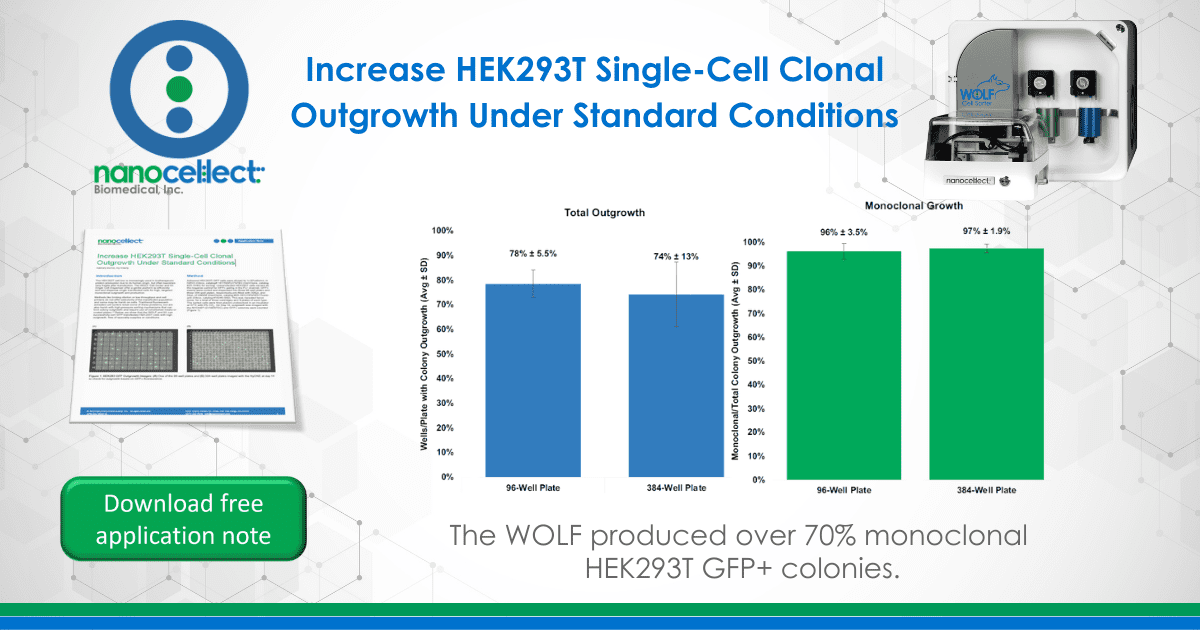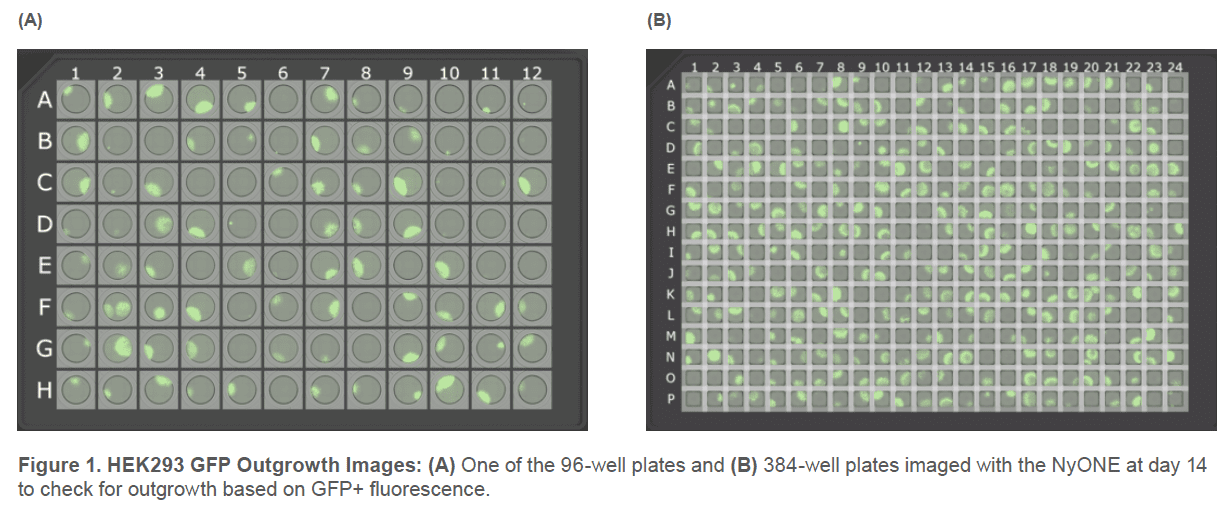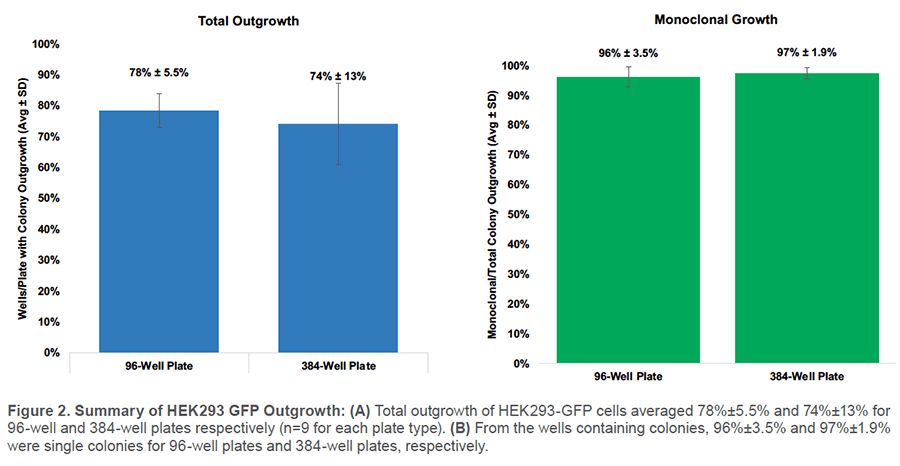Increase HEK293T Single-Cell Clonal Outgrowth under Standard Conditions

Introduction
The HEK293T cell line is increasingly used in biotherapeutic protein production due to its human origin, but often becomes very fragile after transfection. The WOLF Cell Sorter and N1 Single Cell Dispenser offer a gentle platform to efficiently sort and dispense single transfected cells for high, targeted monoclonal outgrowth and production.
Methods like limiting dilution or low throughput and cell printers do not offer selectivity of the transfected population and some may be harsh on cells. Traditional fluorescentactivated cell sorters solve some of these problems, but are also harsh with high-pressure sorting mechanisms that can
limit colony outgrowth and require use of conditioned media or coated plates.1,2 Below, we show that the WOLF and N1 can successfully sort GFP-transfected HEK293T cells with high outgrowth, free of specialty supplies or conditions.
Method
Adherent HEK293T-GFP cells were diluted to 1x105cells/mL in HBSS (Gibco, catalog# 14175095)/2%FBS (GenClone, catalog #25-514H) for sorting. Untransfected HEK293T cells served as
the negative control for GFP+ gating in the FL1 channel. GFP+ events were sorted and dispensed into three 96-well plates and three 384-well plates, respectively pre-filled with 200μL and 50μL of DMEM (GenClone, catalog #25-501)/10%FBS/1%antianti (Gibco, catalog #15240-062). This was repeated twice more, for a total of three cartridges and 9 plates of each type. The sorted cells were then placed undisturbed in an incubator at 37°C with 5% CO2. On Day 14, outgrowth was imaged with the NYONE® (SYNENTEC) and GFP+ colonies were counted (Figure 1).

Results
The WOLF was able to produce >70% monoclonal HEK293TGFP+ colonies in either plate without specialized media, plates, or growth conditions. On average, 78% of 96 well dispenser plates and 74% of 384-well plates contained GFP+ colonies (Figure 2A). Of those colonies, 96% on 96-well plates and 97% on 384-well plates were monoclonal (Figure 2B).
Conclusion
The WOLF significantly outperformed outgrowth expectations of limiting dilution.3 It yielded far more HEK293T-GFP outgrowth than the <10% quoted for a cell printer without specialized media.4 Traditional sorters, though able to enrich for GFP+ cells, would likely produce similar results to the cell printer due to their harsh sorting conditions.
Even though these were stable HEK293T lines, the baseline outgrowth performance indicates the WOLF is the ideal platform for cell line development of sensitive transfected HEK lines.
APN-022

